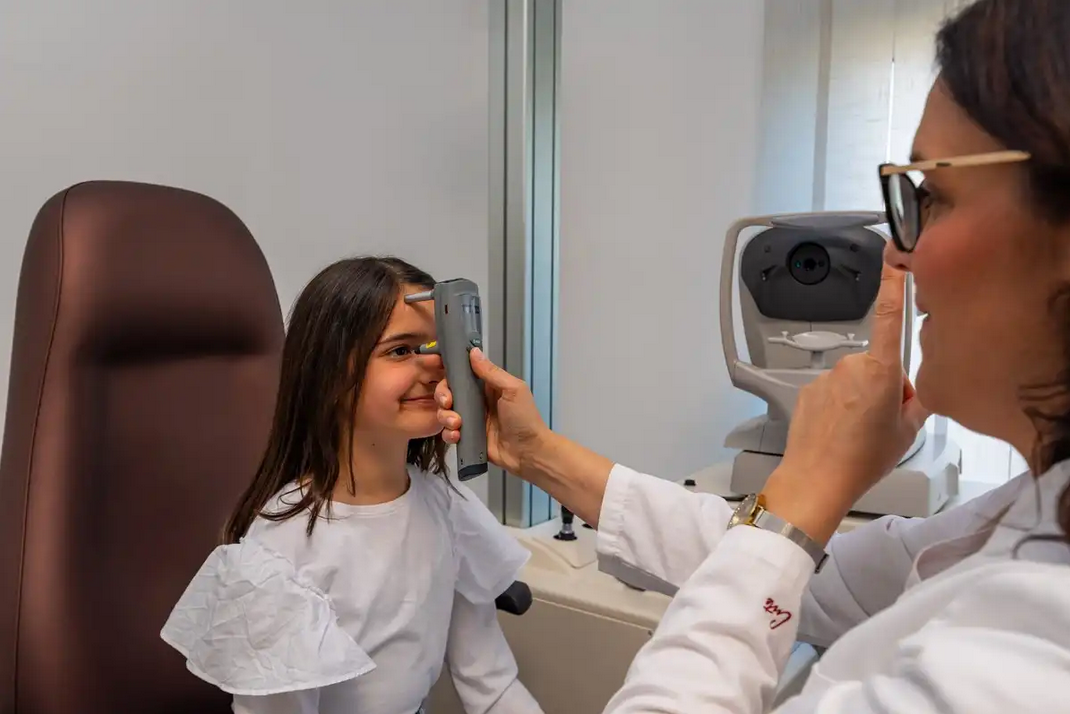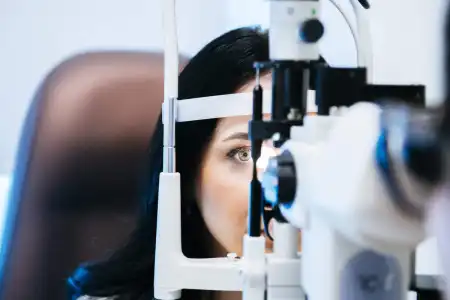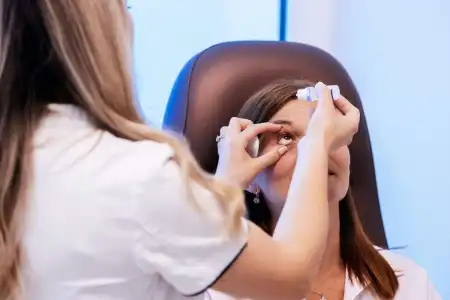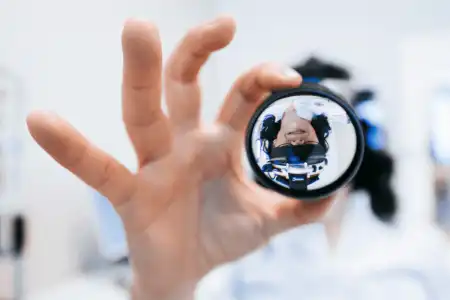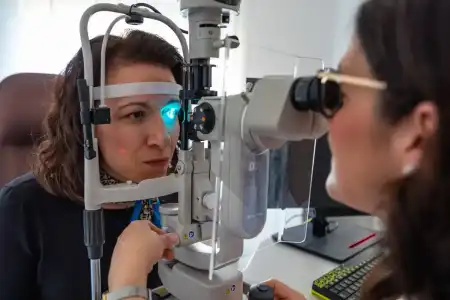As a subspecialist in pediatric ophthalmology, I emphasize the role of parents in promoting the eye health of their little ones. I explain in detail the importance of regular vision exams at different stages of a child's growth and provide useful tips for recognizing the first signs of vision problems. The article offers practical guidelines that parents can apply to support the healthy development of their children’s vision.
Children's eye health is crucial for their overall development and success in learning. Many parents are not aware that vision problems can significantly affect their children's academic abilities and social behavior.
As a subspecialist in pediatric ophthalmology, I often emphasize to parents how important it is to recognize and address any vision problems in children early. Early recognition and treatment of vision problems are essential to prevent long-term consequences that can hinder learning and daily activities.
In this article, we will explore the importance of early diagnosis of vision problems in children, consider the frequency and types of exams needed at different stages of their growth, and offer advice to parents on how they can support their children's eye health.
Why Regular Exams are Key to Early Development
Regular vision exams are the foundation for healthy vision development in children. I witness daily how early intervention can significantly improve not only visual health but also the overall development and education of the child.
Vision development in children is extremely dynamic, and changes can be rapid and subtle. Without regular exams, some vision problems, such as amblyopia or astigmatism, may remain undetected until they begin to seriously affect learning and social skills.
For example, I recently had the opportunity to work with a boy who had difficulty reading and writing. His parents thought the problems were related to dyslexia, but a detailed examination revealed a high degree of uncorrected hyperopia (farsightedness). After appropriate correction, the boy showed significant improvement in school.
In addition to detecting refractive errors, regular exams enable the detection of other eye health conditions that can have long-term consequences if untreated. Pediatric ophthalmological exams should be regular and tailored to each child, ideally starting from the first year of life, then at ages three to five, and before starting school to ensure that vision problems do not affect academic success and personal development.
Regular exams are crucial for maintaining eye health and provide the foundation for each child's long-term success, allowing them to fully realize their potential.
Early Signs and Symptoms of Vision Problems in Children
Understanding the early signs of vision problems in children is crucial for parents to react in time and seek professional help. Vision problems can affect learning, social interactions, and general behavior. Here are some common symptoms to watch for:
- Frequent eye rubbing: Children may rub their eyes due to fatigue or irritation, but if frequent, it may be a sign of visual stress or vision problems.
- Difficulty reading: If a child avoids reading, holds books too close, or complains about blurry text, it may indicate vision problems such as myopia or astigmatism.
- Tearing or frequent blinking: These symptoms can be a response to unclear vision and an attempt by the eyes to focus.
- One eye closing or covering: A child may instinctively close one eye to see better, which may indicate a weakness in one eye.
- Headaches: Frequent headaches, especially after visual tasks, can be linked to excessive eye strain.
- Coordination problems: Difficulties in coordination and estimating distances can be signs of vision problems, affecting the ability to participate in sports and other activities.
If you notice any of these symptoms, it is important to take your child for an examination by an ophthalmologist. Early detection and intervention can significantly improve a child's visual abilities and overall quality of life.
Common Vision Problems in Childhood
Through my work, I encounter various vision problems in children. If not addressed in time, they can have serious consequences on their development and education. Here are some of the most common vision problems in children and possible solutions to help overcome them.
Refractive errors such as myopia (nearsightedness), hyperopia (farsightedness), and astigmatism are common in children. These problems are usually corrected with glasses or contact lenses, enabling clear vision, which is crucial for learning.
Amblyopia (lazy eye) occurs when one eye is not sufficiently developed, leading to poor vision in that eye. Treatment involves covering the stronger eye to encourage the weaker eye to work harder and develop.
Strabismus (crossed eyes) is a condition where the eyes are not aligned and look in different directions. Depending on the cause, treatment may include wearing glasses, eye exercises, or in some cases, surgical intervention.
Dacryocystitis (inflamed tear sac) in some children can lead to inflammation of the tear sac, causing tearing and infection. Treatment usually involves antibiotics, and sometimes surgical intervention to open the tear ducts.
Conjunctivitis (inflamed conjunctiva) can be viral, bacterial, or allergic. Treatment depends on the cause but often includes eye drops and maintaining good hygiene to prevent spreading.
Each of these conditions requires careful monitoring and timely treatment.
How Parents Can Help
As a parent, you play a key role in preserving and supporting your child's eye health. Encouraging proper viewing habits, such as keeping books and devices at a safe distance from the eyes, can help significantly. Also, limiting time spent in front of screens is important, as too much time can lead to eye fatigue.
Ensure that your child's workspace has enough light, which is especially important when they are reading or engaged in activities that require focusing on fine details.
Regular visits to the ophthalmologist are essential, even if your child does not show obvious signs of problems. Ensuring a healthy diet rich in nutrients that support good vision, such as omega-3 fatty acids, lutein, and vitamin A, is also an important step.
Follow these guidelines to support your child's eye health, which is crucial for their successful development and overall well-being.
Conclusion
Parents play a crucial role in preserving the health of their children's eyes. From early symptom recognition to regular exams and promoting healthy habits, your engagement is necessary. Healthy vision in your child not only affects their learning ability and participation in activities but also their overall quality of life. Therefore, it is vital to stay informed and proactive in supporting your child's eye health through all stages of their growth and development.

